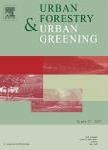版权所有:内蒙古大学图书馆 技术提供:维普资讯• 智图
内蒙古自治区呼和浩特市赛罕区大学西街235号 邮编: 010021

作者机构:Univ Roma Tor Vergata Dept Biol Via Ric Sci 1 I-00133 Rome Italy Univ Sapienza Rome Dept Environm Biol Piazzale Aldo Moro 5 I-00185 Rome Italy
出 版 物:《URBAN FORESTRY & URBAN GREENING》 (城市林学与城市绿化)
年 卷 期:2019年第38卷
页 面:354-370页
核心收录:
学科分类:0710[理学-生物学] 0830[工学-环境科学与工程(可授工学、理学、农学学位)] 0907[农学-林学] 08[工学] 09[农学] 0902[农学-园艺学] 0833[工学-城乡规划学] 0834[工学-风景园林学(可授工学、农学学位)]
主 题:Biodiversity Global North Global South Raster Spontaneous plant species
摘 要:This paper analyses the distribution patterns of Rome s spontaneous flora, based on published atlas of species distribution in a grid format. The use of Self-Organizing Map (SOM) makes it possible to recognise and clearly define nine different ecological groups of grid-cells, corresponding to nine different landscape types. The landscape types are characterised by sets of diagnostic species, which are characteristics of the natural environment (soil, climate) and history of urbanisation. This pattern runs counter to the traditional urban-rural gradient, which is the general model of the towns in the Global North;instead it is closer to the still poorly studied towns of the Global South, where urban development is chaotic and unplanned, resulting in a complex urban mosaic of patches with different history and land-use.